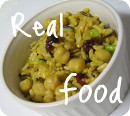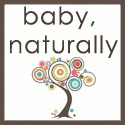Reasons we decided cloth diapering was for us:
1. The cost factor: figures vary, but we found that the average cost to use disposables for a minimum of 2 years would be between $1500 and $2000. That is repeated for each child you have. With cloth diapers, there is the initial set up cost, which can run between $300-$1000, depending on the cloth diapering system you use. This is a one time cost, because the diapers can be reused with any future children you have. So far for Lincoln's stash, we have spent just about $150 dollars. He will eventually need to add bigger diapers to the stash, but we have been happy with what we started with. We were also lucky enough to be able to borrow a good numbers of diapers from a friend, so if that is an option for you, you can cut costs even more. There is the consideration of the cost incurred to wash the diapers, but we have found our water bill has only increased by a few dollars per month so far...much less than we would have been spending if we were using disposable diapers.
2. The environmental factor: this article sums up nicely what environmental factors we considered.
3. The health factor: we liked the idea of keeping cloth next to the baby's skin all day instead of the plastic used to make diapers.
4. The cuteness factor: cloth diapers are adorable. They come in fun prints and colors and give baby an irresistibly cute fluffy butt.
5. The convenience: Ok, there is no way I can argue that cloth diapers are more convenient than disposable diapers. Not going to happen. I can, however, point out that cloth diapers are much more convenient than they used to be. We are even able to use them when we go to the store or out to eat, just by carrying a water-proof bag with us in which to carry the diaper.
In order to be completely fair, I will admit that we use disposable diapers at night. We eventually hope to switch to cloth at night, but at the moment, we are still new parents and changing a disposable at 3:00 AM is a bit quicker than a cloth, and we need all the sleep we can get!
So, to start, I am going to share the 2 types of diapers we started with. We have expanded a bit from these 2 types, but that will be another post.
 Above, Lincoln is wearing a prefold held together with a Snappi. A prefold is a rectangular diaper that is thicker in the middle than on the sides. They come in many different thicknesses, and obviously the thicker you go, the more absorbency you get. You can also find these diapers in bleached or unbleached cotton and are distinguished by the location in which they are made (e.g., Chinese Prefolds or Indian Prefolds). If you go with bleached, make sure they are oxygen bleached and not chlorine bleached to prevent any chance of irritation. Chinese prefolds are generally a bit more durable than Indian prefolds, but Indian prefolds win the prize for softness. We went with unbleached Indian prefolds for Lincoln. They have held up great so far and are super soft! When looking at thickness, you will see measurements such as 4x6x4 or 4x8x4 (that is 4 ply on the edges, 8 in the middle). Go with the bigger numbers, if available. They'll be a bit bulkier, but you won't have to risk leaking as much. If you do go with the thinner, make sure you have doublers on hand. In addition to cotton prefolds, you can also find prefolds made from hemp, which is even more absorbent.
Above, Lincoln is wearing a prefold held together with a Snappi. A prefold is a rectangular diaper that is thicker in the middle than on the sides. They come in many different thicknesses, and obviously the thicker you go, the more absorbency you get. You can also find these diapers in bleached or unbleached cotton and are distinguished by the location in which they are made (e.g., Chinese Prefolds or Indian Prefolds). If you go with bleached, make sure they are oxygen bleached and not chlorine bleached to prevent any chance of irritation. Chinese prefolds are generally a bit more durable than Indian prefolds, but Indian prefolds win the prize for softness. We went with unbleached Indian prefolds for Lincoln. They have held up great so far and are super soft! When looking at thickness, you will see measurements such as 4x6x4 or 4x8x4 (that is 4 ply on the edges, 8 in the middle). Go with the bigger numbers, if available. They'll be a bit bulkier, but you won't have to risk leaking as much. If you do go with the thinner, make sure you have doublers on hand. In addition to cotton prefolds, you can also find prefolds made from hemp, which is even more absorbent.The diaper above is called a fitted diaper. It has snaps on the sides and is made of an absorbent cotton fabric. It functions the same way as a prefold diaper, with the convenience of going on like a disposable. The brand above is called Kissaluvs, but many different types exist out there.
The prefold and fitted diapers both require a cover to be worn over them to prevent leaking through to the baby's clothes. I think plastic pants still exist, but also available now are covers made from breathable, waterproof fabric. We have a few different brands of these:
 The brand Lincoln is wearing above is the Bummis Super Whisper Wrap. It velcros on over the diaper.
The brand Lincoln is wearing above is the Bummis Super Whisper Wrap. It velcros on over the diaper.
This brand is called Thirsties. It also just velcros on, but is a bit softer and more flexible than the Bummis.
So, that is a start to our cloth diaper experience! I have much more to write about, so perhaps I will have to do a cloth diapering blog series. And now, off to put the diapers in the dryer!






That is the cutest baby modeling those diapers!
ReplyDeleteWow. I have to admit I didn't read all of this, but still... wow.
ReplyDelete